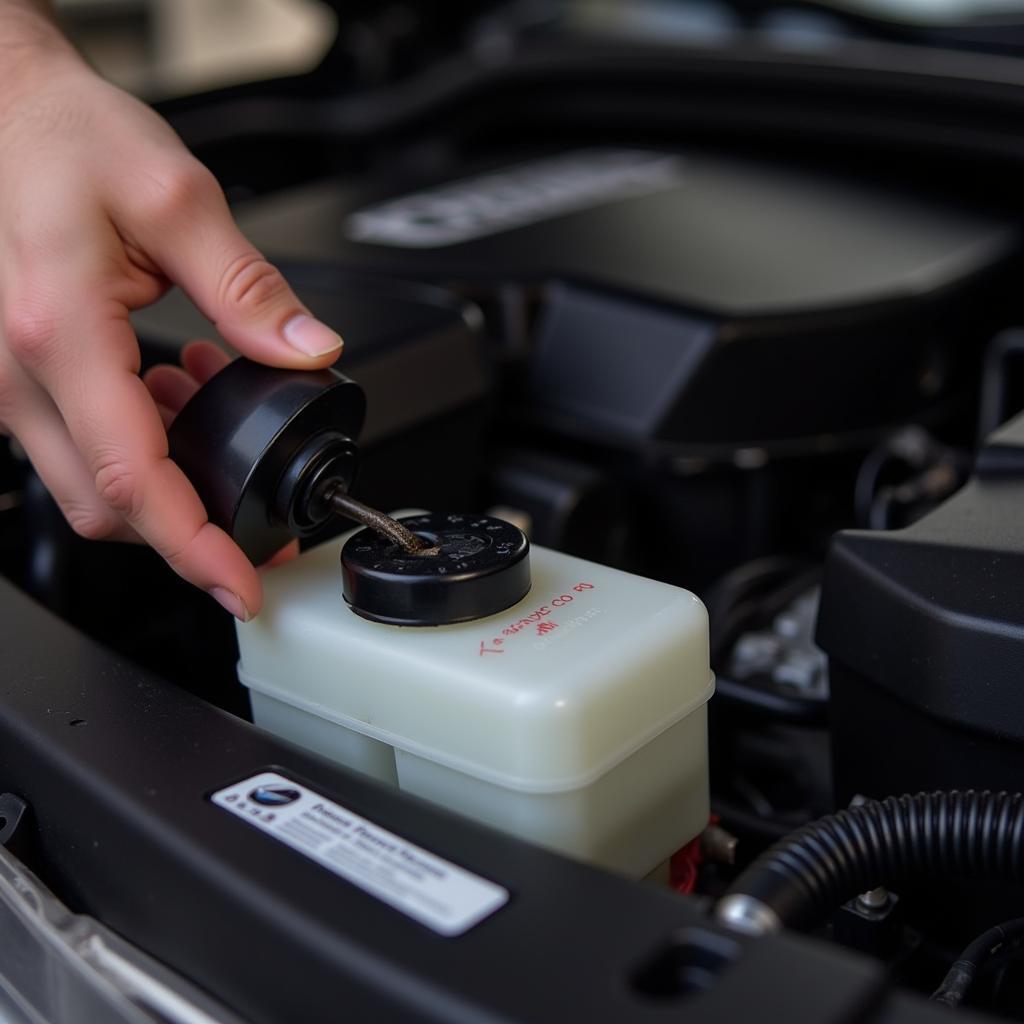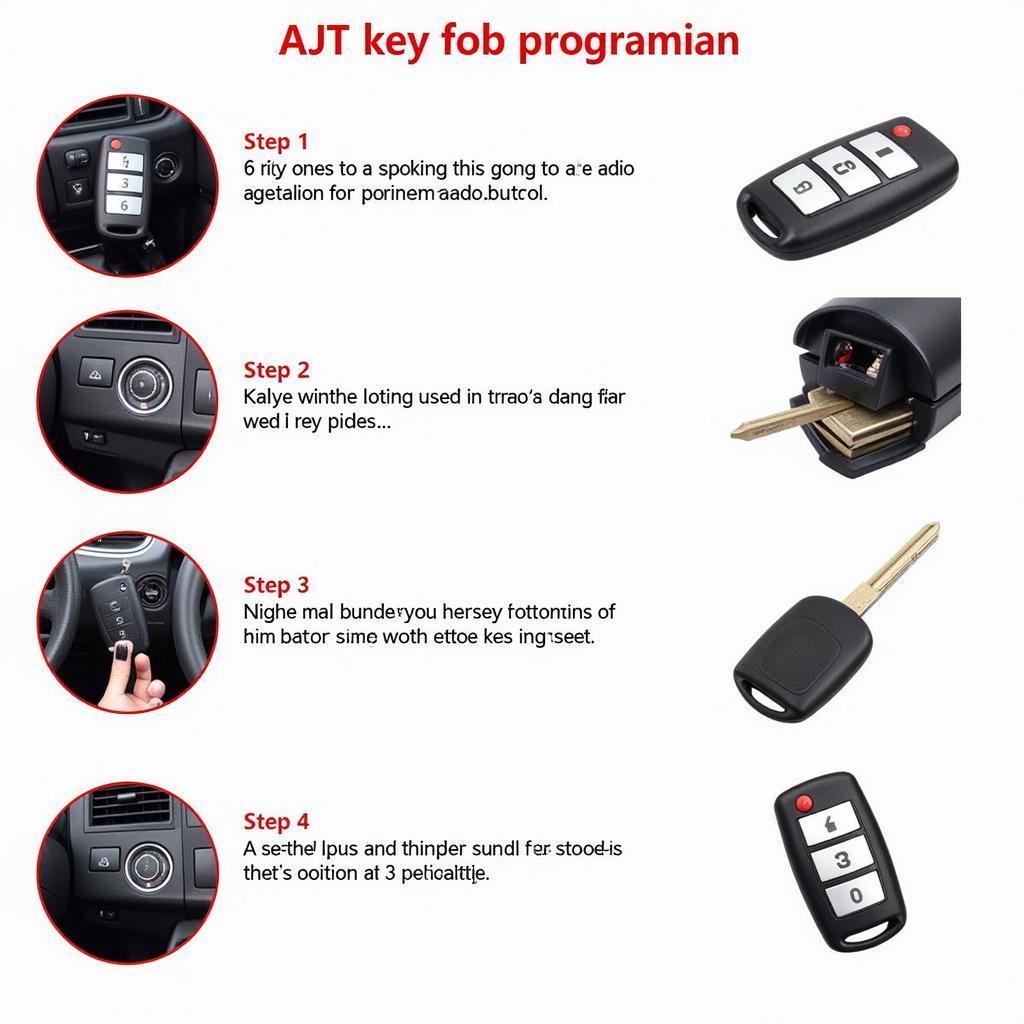The brake warning light on your 2015 Mercedes-Benz E350 is a crucial safety feature designed to alert you to potential issues with your braking system. When this light illuminates, it’s essential not to ignore it. This article will explore common reasons why your 2015 Mercedes-Benz E350 brake warning light might be on and provide potential solutions to help you get back on the road safely.
Understanding Your Brake Warning Light
The brake warning light, often a red exclamation mark within a circle, can indicate several problems, from low brake fluid to more serious issues like a malfunctioning ABS system.
Common Causes for a 2015 Mercedes-Benz E350 Brake Warning Light
Here’s a breakdown of common reasons your brake warning light might be activated:
- Low Brake Fluid: One of the most frequent causes is low brake fluid. Brake fluid is essential for transmitting force from the brake pedal to the brake calipers, and a leak in the system can reduce fluid levels, triggering the warning light.
- Worn Brake Pads: Brake pads naturally wear down over time. When they reach a certain thinness, a sensor within the brake pad will activate the warning light, signaling you to replace them.
- Faulty Brake Sensor: Like any electrical component, the brake pad wear sensor itself can malfunction. A faulty sensor might send a false signal to the dashboard, illuminating the warning light even if the brake pads are in good condition.
- ABS Issue: Your Mercedes-Benz E350 is equipped with an Anti-lock Braking System (ABS), designed to prevent wheel lockup during hard braking. If the ABS system detects an issue, it can trigger the brake warning light.
- Brake Fluid Leak: A leak anywhere in the brake lines, calipers, or master cylinder can result in a loss of brake fluid pressure, reducing braking efficiency and illuminating the warning light.
- Master Cylinder Problems: The master cylinder plays a critical role in converting the force from your foot on the brake pedal into hydraulic pressure that activates the brakes. A failing master cylinder can lead to a soft or spongy brake pedal and illuminate the warning light.
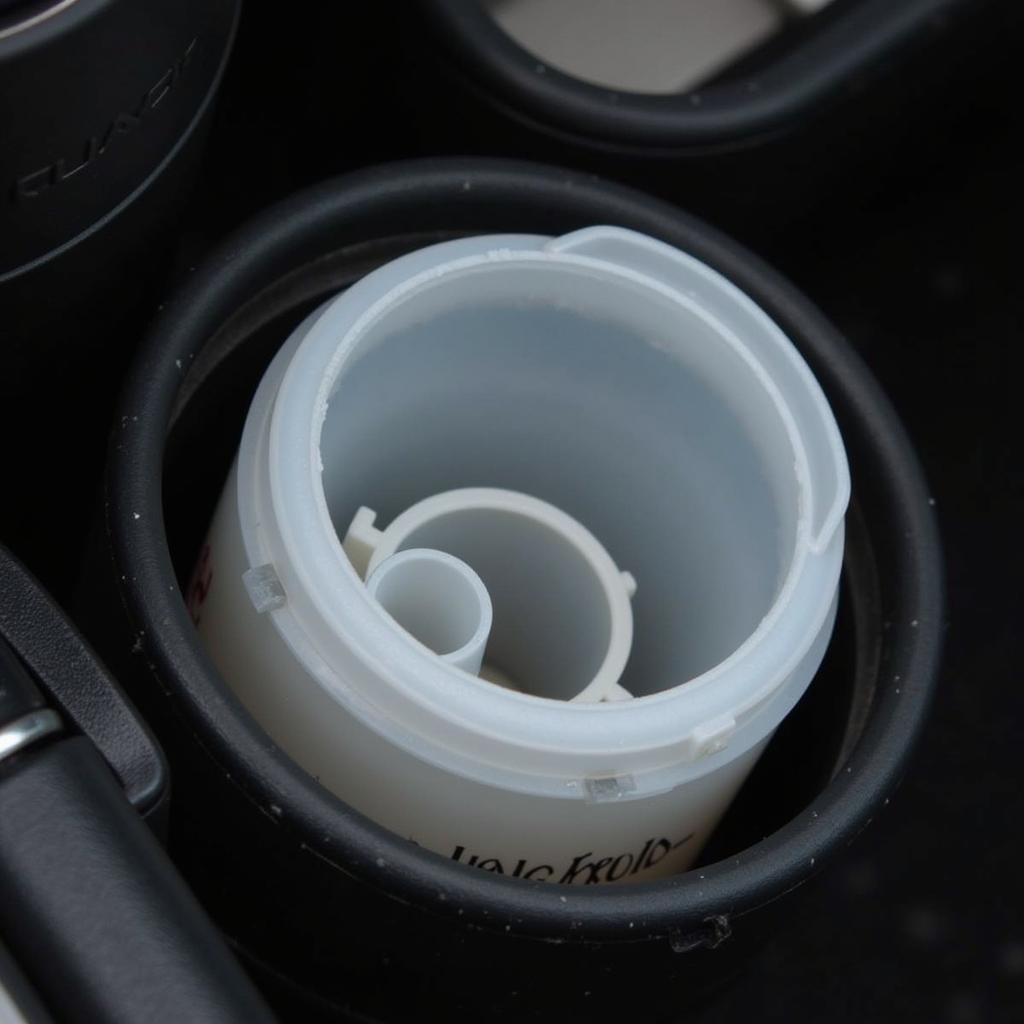 Brake Fluid Reservoir
Brake Fluid Reservoir
Troubleshooting Your 2015 Mercedes-Benz E350 Brake Warning Light
While it’s recommended to have a qualified mechanic diagnose brake warning light issues, especially in a sophisticated vehicle like the Mercedes-Benz E350, here are some initial steps you can take:
-
Check Brake Fluid Level: Safely park your car on a level surface. Locate the brake fluid reservoir under the hood (refer to your owner’s manual if needed) and visually inspect the fluid level. If it’s below the “minimum” mark, adding brake fluid might temporarily resolve the issue, but a professional inspection is still crucial to identify the underlying cause of the low fluid level.
-
Inspect Brake Pads: If you’re comfortable doing so, you can visually examine your brake pads by looking through the spaces between the wheel spokes. If you see very little brake pad material remaining (less than ¼ inch), it’s time for a replacement.
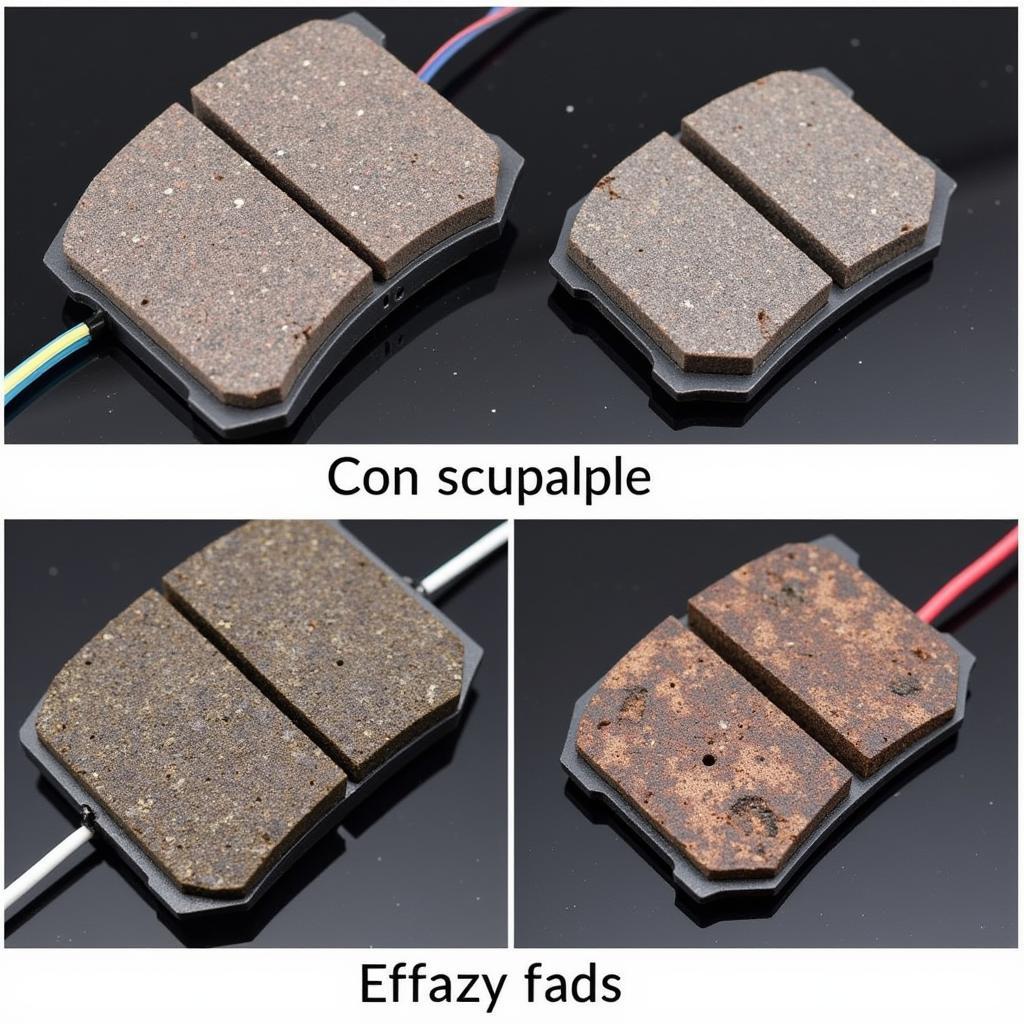 Worn Brake Pads
Worn Brake Pads
When to Seek Professional Help
While the above steps can help with initial troubleshooting, it’s crucial to remember that your vehicle’s braking system is complex and critical for your safety.
Seek immediate professional assistance if:
- The brake warning light is illuminated along with the ABS warning light.
- You experience a soft or spongy brake pedal.
- You hear unusual noises when applying the brakes.
- Your car pulls to one side when braking.
- You are unsure about any aspect of inspecting or maintaining your brake system.
Remote Diagnostics and Software Solutions
Advancements in automotive technology have led to increasingly sophisticated onboard diagnostic systems. In some cases, remote diagnostics and software solutions can be used to identify and address certain brake-related problems in your 2015 Mercedes-Benz E350.
-
Remote Diagnostics: Specialized technicians can remotely access your vehicle’s computer system to read diagnostic trouble codes (DTCs), often providing more specific information about the nature of the problem. This can be particularly helpful in identifying issues with the ABS system or other electronic components related to your brakes.
-
Software Updates: Occasionally, software glitches in the vehicle’s electronic control unit (ECU) can trigger false warning lights. In such cases, a software update performed by a qualified technician using specialized equipment may resolve the issue.
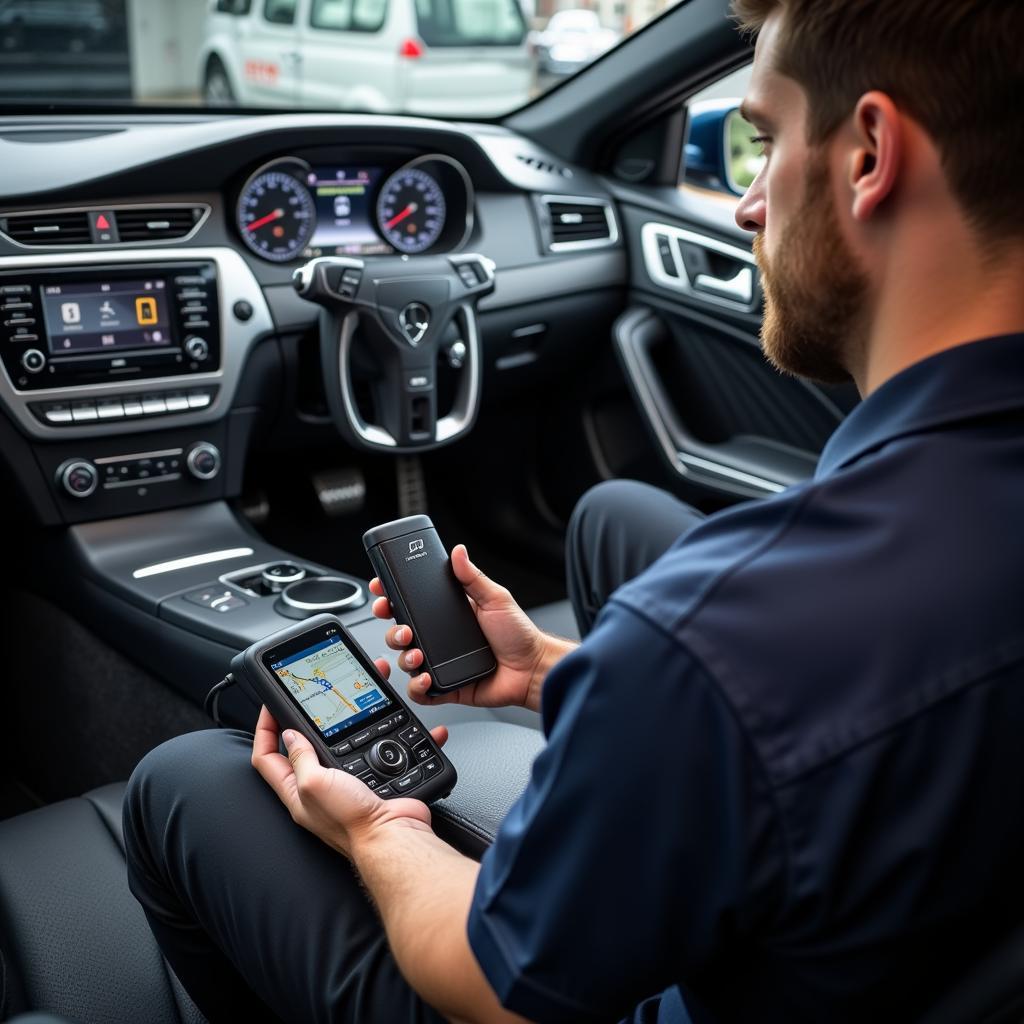 Mercedes-Benz Diagnostic Tool
Mercedes-Benz Diagnostic Tool
Conclusion
Addressing a brake warning light promptly is crucial for your safety and the optimal performance of your 2015 Mercedes-Benz E350. While simple checks like inspecting brake fluid levels and visually examining brake pads can offer initial insights, seeking professional help from a qualified mechanic is essential for accurate diagnosis and repair. Remember, a well-maintained braking system is fundamental to a safe and enjoyable driving experience.

